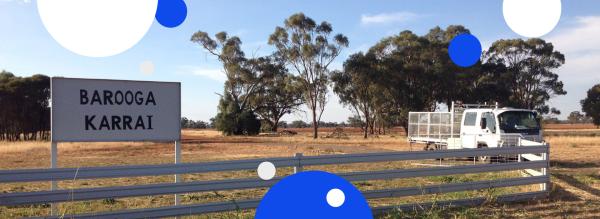
Rural communities need genuine commitment, not just a talkfest

Allan Teale,
PhD Candidate
Profile page
In an effort to create a more hopeful future for young people living in remote communities, UTS PhD student and Town Planner, Allan Teale, has been part of a team initiative that seeks to build a remote teaching facility which can deliver higher education courses without students needing to relocate. In his role in the team he is currently in conversation with State and Federal government and has got the ball rolling on transitioning students to UTS. Most importantly, the team have built the mutual trust needed to enact change.
It all started on his 40th birthday, when Teale received a very special present from his wife: the realisation that he has Aboriginal heritage, traced back to the Euabalong area. Teale still gets emotional when remembering the moment.
“I felt shocked, and then I immediately felt sad about all the things I missed out on by not knowing. I felt guilt that I didn’t know and didn’t do anything to get involved,” he remembers.
Since then, Teale has very much been in touch with his community in western NSW. After many years of visiting and getting to know his people, he finally became a member and is now actively working towards improving the infrastructure and educational opportunities for young people in the area.
“Young people over there don’t have much hope when it comes to their future. They know if they want to study anything after high school, they have to leave their family, home and country. Many people don’t realise that this is a very difficult challenge.
“It seems not only impossible financially, but also emotionally. Country and community are incredibly important especially for Indigenous people. In order to get an education, they need to be prepared to enter a hostile world that is completely different from their own and in which they will have absolutely no support,” Teale explains.
As such, Teale and his many partners are working towards initiatives that will enable these students to study locally and have pathways to UTS. One of the key challenges in achieving this has been the initial lack of trust. The reason for this is simple – these communities have been disappointed one too many times.
“Researchers go in, do a year of research, and then disappear forever. Nothing changes for the locals. Government programs that are meant to help them are rolled out but end and disappear after a few years.
“Again and again, they have been let down. They can clearly feel that nobody really cares. Even when historical artefacts are discovered on their land, some of which are older than the Pyramids, it doesn’t seem to interest anyone.
“We wanted to ensure they know we genuinely care, and we mean what we say. We’re not just there to have a talkfest. And just very recently, when shopping at the local IGA, the cashier noticed I was from UTS and said ‘Thank you. We are just happy somebody cares’,” he says.
Teale argues that these areas are often neglected specifically because there are not many political votes to be gained in rural communities, so they become less attractive for government investment. However, Teale is not one to let such injustice and lack of care slide.
“You have to keep knocking on doors. It’s very easy to see why it can’t be done, and if you focus on that you will definitely not get it done. I think you just have to continuously be that annoying bite in the bum, and I’m happy to be it,” he says.
Allan Teale and the team members received a commendation in the UTS Indigenous Excellence Award category at the 2018 UTS Human Rights Awards for their work in Murrin Bridge and Lake Cargelligo.
The Problem
Young people living in remote areas of Australia have very limited opportunity in pursuing an education, which leaves them unmotivated and hopeless when thinking about their future.
The Response
UTS PhD student and town planner, Allan Teale, has teamed up with UTS academics Campbell Drake, Michael Day and government officials to tackle this issue from two fronts – infrastructure and local higher education courses.
What helped accomplish this?
For the third year running, UTS Interior and Spatial Design students have been visiting communities in western NSW as part of their course, conducting research and developing proposals to address local needs.
What has changed as a result?
The team have established the trust of the local community and caught the attention of State and Federal Government in securing funding for a teaching facility and program.
Download full case study
